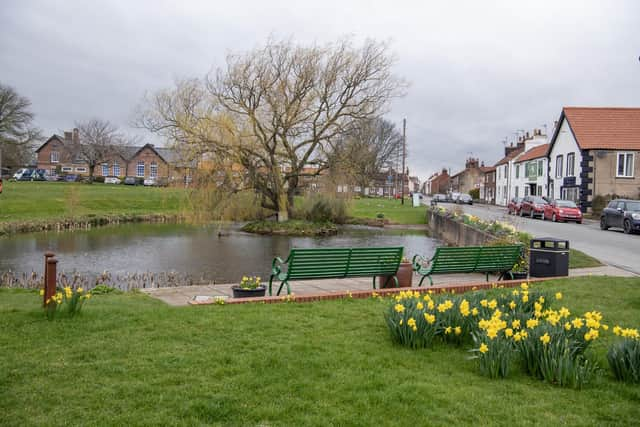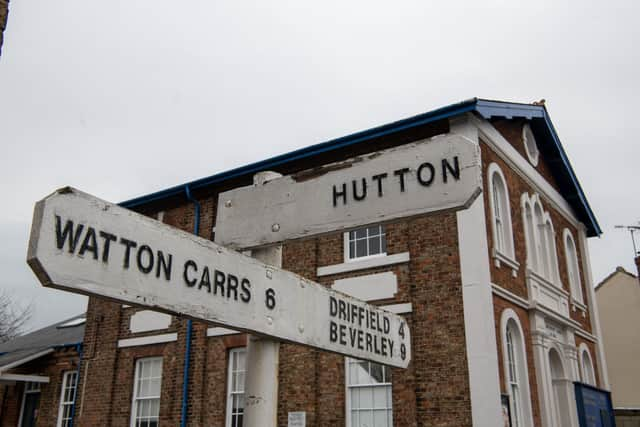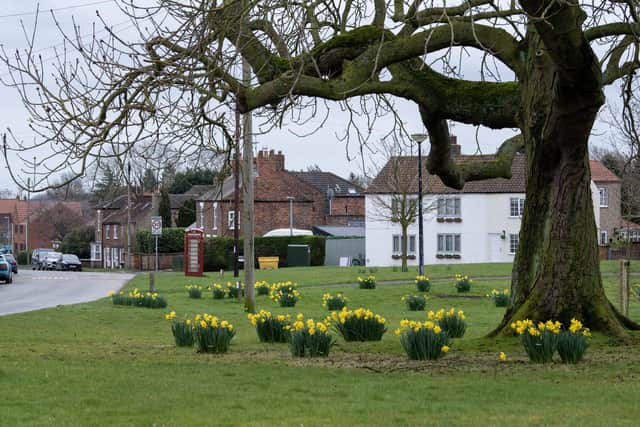Village Focus: Deserted medieval villages and the biggest village greens make up past and present of Hutton Cranswick
Over time and, I am sure I have read somewhere, over a short path – they became Hutton Cranswick, a village nestling in East Yorkshire.
It is regarded today by its 2,000 residents as the one village – and one that is thriving.
Advertisement
Hide AdAdvertisement
Hide AdYou will find shops including a mini market, fish and chip shop, post office, farm shop, hairdresser and the White Horse pub.


The butcher shop is as traditional as you will find.
James White’s doesn’t have an array of products hanging on display outside the shop and has resisted temptation to branch out into artisan delicacies that many of its counterparts have done.
He once told the Yorkshire Post: “We’re still a traditional butcher’s shop bothered more about selling just good quality meat than lots of stuff with loads of marinade, although we do sell that too.
“I remember when tomato sausages were seen as quite risqué.”


How times have changed…
Advertisement
Hide AdAdvertisement
Hide AdThere are three halls in the village from sports to others for official meetings and the use of various clubs and societies, of which you will find a very active WI, a bowls club, tai chi and art etc.
The halls do not belong to the village. They are owned and managed by the Sports and Recreation Association, the Methodist Church and the Women’s Institute.
Hutton Cranswick is, quite rightly too, proud of its sprawling village green which is over-looked by the primary school on one side, some houses at the other and the shop and the pub across the road.


Apparently, with it six and a half acres, it is the biggest in the East Riding of Yorkshire. It boasts impressive horse chestnut trees, a children’s play area, the village pond and is the perfect host to the Hutton Cranswick Village Show that has made a comeback in recent years.
Advertisement
Hide AdAdvertisement
Hide AdIf it wasn’t for a couple of local mothers, Maura Bond and Sally Johnson, the community centrepiece would not have returned for the first time in 2015 after an absence of 58 years.
They had moved to Hutton Cranswick from other villages that had shows and thought the green would make the perfect community focal point.
They said: “We have this absolutely beautiful village green which acts as a focal point for the village and it is a perfect place to have it and bring people together.”
Living in Hutton Cranswick, unusually for rural villages, is not out of bounds for anyone.
Advertisement
Hide AdAdvertisement
Hide AdWhile there are only seven properties listed for sale on property website, Rightmove, a charming two bedroomed country style cottage, listed as Hutton interestingly, is priced at £150,000 this week while a three bedroomed terraced house, in just Cranswick, is £180,000.
At the other end of the scale is a substantially renovated bungalow, on the market for just short of £1m. But, it does have its own swimming pool.
As well as Hutton, Cranswick and Hutton Cranswick, the civil parish includes the hamlets of Rotsea and Sunderlandwick – which is a private estate. The house was built in 1962–63 for Sir Thomas Ferens on the site of an earlier Georgian house, Sunderlandwick Hall, altered in 1840s and that burnt down on VJ Day, 1945.
Hutton Cranswick is listed in the Domesday Book and has a fascinating history from them on.
Advertisement
Hide AdAdvertisement
Hide AdWithin the village is the remnant of a 13th-century monastic moat beside Sheepman Lane, marking the site of a former Cistercian Grange belonging to Meaux Abbey near Beverley.
Not even so much as a mile away, are the remnants of Howe Hill Bronze Age round barrow. The 75 feet (23 m) diameter mound was excavated in 1892 which unearthed flint articles and evidence of previous disturbance of the site, including burnt bones and a food vessel indicating a burial site.
It is also suggested that the mount was a ‘moot hill’ meeting place, historically used as an assembly point for people to decide local issues.
At the same site, to the north-west of Old Sunderlandwick Lane, is evidence of the deserted medieval village of Sunderlandwick, a settlement also mentioned in the Domesday survey, with enclosures, hollow ways, ridges and furrows, and ditches.
Advertisement
Hide AdAdvertisement
Hide AdBy 1823, Hutton Cranswick was a civil parish in the Wapentake of Harthill and the parish church was under the patronage of Lord Hotham, a soldier and a member of the Conservative party.
St Peter’s Church, which has Norman and early English pieces is a Grade II listed building (designated in 1966) and underwent extensive renovation in 1875.
By then there was also a Methodist chapel and a Sunday school. Occupations included 19 farmers, two blacksmiths, two wheelwrights, two joiners, three shoemakers, four shopkeepers, three tailors, a rope maker, a butcher, a corn miller, and the landlords of The Pack Horse and the Decoy Inn public houses. Two carriers operated between the village and Hull, Beverley, and Driffield once a week.
The village also had its own airbase with RAF Hutton Cranswick opening in January 1942 as a fighter airfield and unusually for the time – its three runways were made of concrete, rather than grass like other airfields.
Advertisement
Hide AdAdvertisement
Hide AdMany Spitfire fighter squadrons passed through and it was used by the Royal Air Force, the Royal Canadian Air Force (RCAF), and several Polish Fighter Squadrons of the RAF throughout its four years of service.
Eventually the squadrons were posted onwards, even to Australia, and from December 1, 1943, the Anti Aircraft Co-operation 291 Squadron was formed at the airfield for target towing and similar uses along the east coast.
The final unit to operate from Hutton Cranswick was the fighter unit, 124 Squadron before RAF Hutton Cranswick finally closed in mid 1946.
